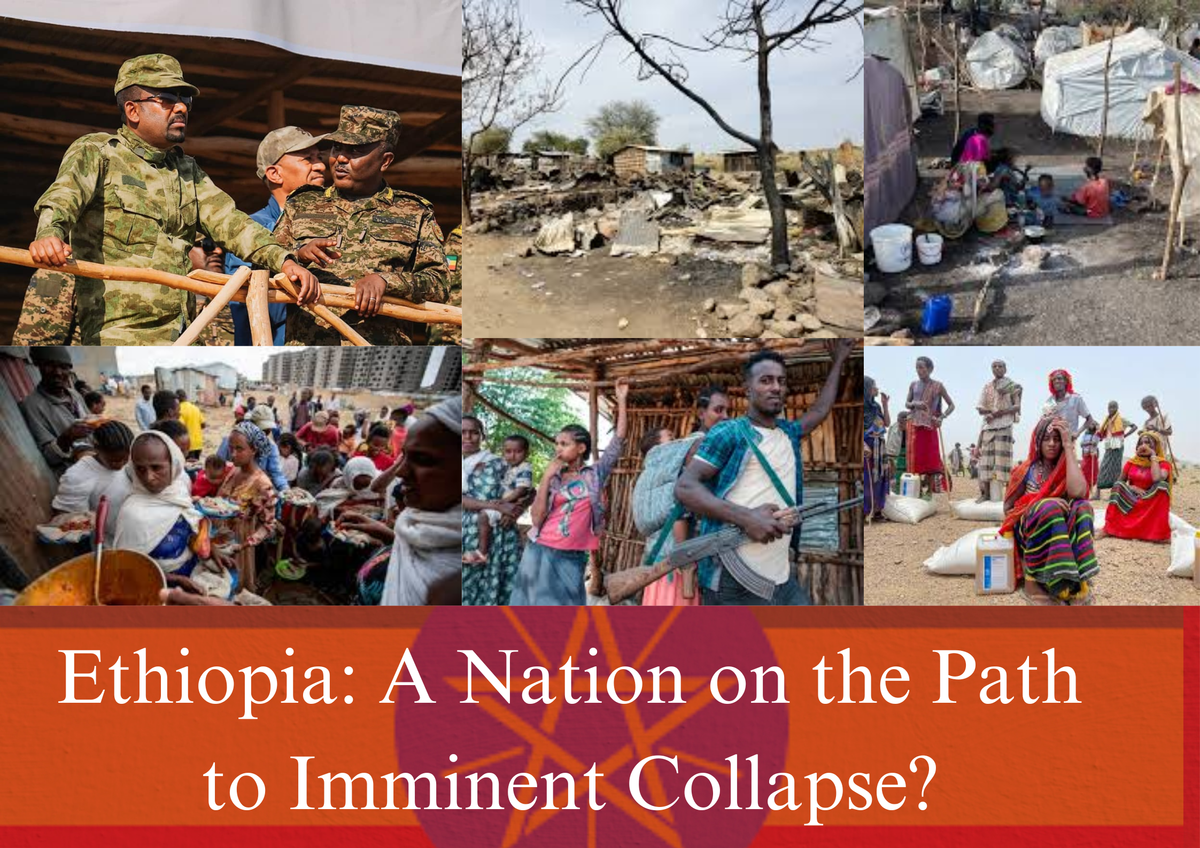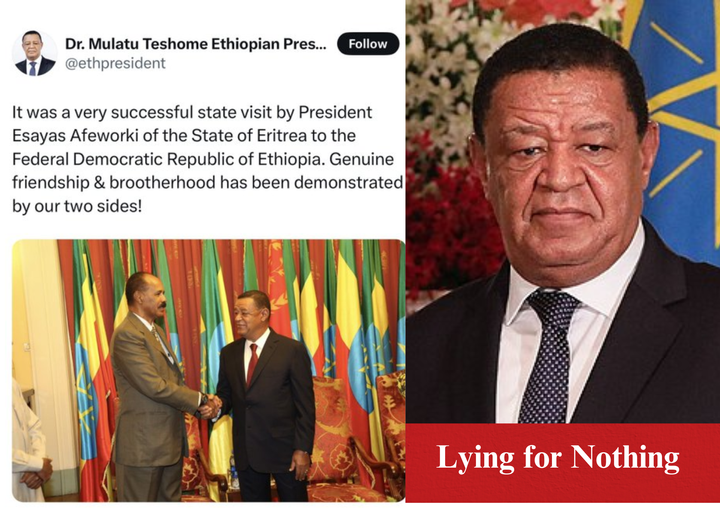Ethiopia’s Deepening Crisis: Internal Conflicts, Regional Tensions, and a Refugee Struggle
Ethiopia faces mounting crises, from internal insurgencies to worsening famine and regional isolation. With rising conflict and economic strain, the nation risks imminent collapse unless urgent action is taken.

Amanuel Biedemariam 2/22/2025
Introduction
Once seen as a beacon of stability in the Horn of Africa, Ethiopia's True peace remains elusive despite a ceasefire in November 2022 between the Ethiopian government and the Tigrayan People’s Liberation Front (TPLF), which Waris is now facing mounting crises on multiple fronts. Despite a ceasefire in November 2022 between the Ethiopian government and the Tigrayan People’s Liberation Front (TPLF), true peace remains elusive. Instead, new conflicts have erupted within the country, food insecurity is at catastrophic levels, and Ethiopia’s role in regional tensions is growing. Meanwhile, Sudanese refugees who fled war are now struggling under Ethiopia’s restrictive visa policies, further compounding the humanitarian crisis.
Internal Unrest: A Country Fragmenting
The end of the Tigray War was supposed to usher in stability, but Ethiopia has become even more unstable. Since the ceasefire, a new insurgency has gained ground in the Amhara region, where armed groups have made governance increasingly difficult. In Oromia, Ethiopia’s most populous region, another ongoing rebellion continues to challenge federal authority. As a result, vast portions of the country have become dangerous and lawless, with civilians caught in the crossfire.
Beyond the violence, famine looms over northern Ethiopia, including Tigray, where millions are at risk of starvation. The United Nations estimates that 30 million people—one-quarter of Ethiopia’s population—need emergency food aid. Without significant intervention, the country could face one of the worst humanitarian disasters.
Regional Tensions: Ethiopia at Odds with Its Neighbors
Ethiopia’s domestic turmoil is spilling into the broader region, threatening to ignite wider conflicts. Prime Minister Abiy Ahmed’s government has escalated tensions with Somalia, become entangled in Sudan’s civil war, and even made threatening gestures toward Eritrea, a former ally in the Tigray war.
Rather than strengthening regional cooperation, Ethiopia’s actions have alienated it from its neighbors, including Egypt, Sudan, Eritrea, and Somalia. Instead of acting as a stabilizing force in the Horn of Africa, Ethiopia is actively working against the collective security interests of the region, further isolating itself.
Ethiopia’s foreign policy has become increasingly dependent on external actors while losing ground diplomatically within Africa. The UAE has emerged as Ethiopia’s primary military and financial backer, bolstering its military efforts while deepening its involvement in regional disputes. Turkey continues to supply Ethiopia with drones and other military equipment, even as it simultaneously provides military aid to Somalia. This dual approach underscores Ethiopia’s failure to build exclusive, long-term strategic alliances. Egypt, Sudan, and Eritrea view Ethiopia’s aggressive posture as a threat, further increasing tensions over the Grand Ethiopian Renaissance Dam (GERD) and territorial disputes.
By positioning itself as a tool for external powers rather than fostering African-led diplomacy, Ethiopia is isolating itself from the very region it needs for long-term stability.
The Sudanese Refugee Struggle in Ethiopia
As Ethiopia grapples with internal and regional instability, Sudanese refugees seeking safety are facing harsh conditions under restrictive government policies. After Sudan’s civil war erupted in April 2023, around 163,000 Sudanese refugees fled to Ethiopia. While Ethiopia has historically been praised for hosting over one million refugees, its policies toward Sudanese newcomers have been particularly severe.
In October 2023, Ethiopia introduced a $100 monthly visa renewal fee for Sudanese refugees living in urban areas, along with a $10 daily fine for overdue payments. Many refugees, having fled war with little to no resources, are unable to pay. As a result, some have been arrested and imprisoned for failing to renew their visas.
Those who cannot afford the fees are forced into hiding, avoiding the streets out of fear of detention. Others struggle to meet basic needs, resorting to informal and underpaid work to survive. A Sudanese refugee, a mother of four, expressed her hardship, stating that feeding herself and her children is her only concern. She takes on odd jobs to make ends meet, such as henna hand art and serving tea in a local restaurant courtyard.
While Ethiopia allows Sudanese refugees to live in designated camps without paying visa fees, camps in regions like Amhara have become unsafe, with reports of abductions, sexual violence, and attacks by militias. Many refugees prefer to stay in cities where they have better access to work and services, but without official refugee status, they remain vulnerable to exploitation and legal uncertainty.
Conclusion: A Nation on the Brink
Ethiopia’s challenges are compounding at an alarming rate. With multiple internal insurgencies, worsening famine, growing regional hostilities, and an increasingly repressive refugee policy, the country is facing a perfect storm of crises. If left unchecked, these issues could destabilize Ethiopia and the Horn of Africa.
For Ethiopia to avoid deeper catastrophe, urgent action is needed from its government and the international community. Addressing humanitarian needs, easing tensions with neighboring countries, and rethinking refugee policies must be top priorities. Otherwise, Ethiopia risks becoming the epicenter of a far greater regional disaster that could reverberate beyond the Horn of Africa and reshape the region’s geopolitical landscape.
Please support my work and get my latest book here. Eritrea: The Struggle is Long, and Victory is Certain




Comments ()